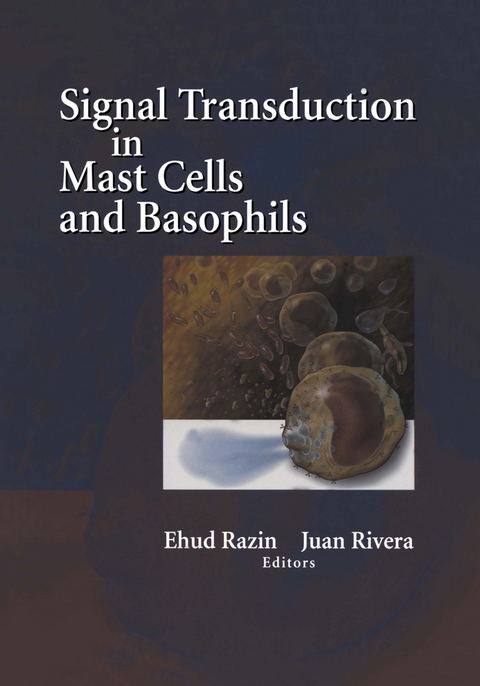
Signal Transduction in Mast Cells and Basophils
Springer-Verlag New York Inc.
978-0-387-98625-8 (ISBN)
Mast cells and basophils are responsible for inflammatory and allergic reactions. As such, the signals that generate these responses and how their pathways of action work are the focus of much present day research into allergy and inflammation. This book focuses primarily on the molecular mechanisms that govern mast cell and basophil cell biology and function, as well as providing a comprehensive summary of the field of signal transduction and also giving insights into areas that have therapeutic potential. The book provides detailed insights into mast cell and basophil growth and development, their activation by allergens, including details of receptor activation and downstream events, and the regulators of morphology and degranulation. The metabolic pathways involved in prostaglandin and leukotriene production are discussed as is the role of transcription factors in mast cell growth and cytokine production. Written by leaders in the field, this volume will provide the reader with an up-to-date account of a topic where the rapid progress makes conventional information gathering difficult.
Section I.- 1 Signals in the Regulation of Mast Cell Growth and Development: A Perspective.- 2 The Regulation of Mast Cell and Basophil Development by the Kit Ligand, SCF, and IL-3.- 3 The c-kit Receptor and the mi Transcription Factor: Two Important Molecules for Mast Cell Development.- 4 Mouse and Rat Models of Mast Cell Development.- 5 Factors That Affect Human Mast Cell and Basophil Growth.- 6 Signal Transduction by Cytokines.- 7 Mast Cell Apoptosis and Its Regulation.- Section II.- 8 Early Signals in Mast Cell Activation: A Perspective.- 9 Fc?RI Signaling in Specialized Membrane Domains.- 10 Regulation and Function of Protein Tyrosine Kinase Syk in Fc?RI-Mediated Signaling.- 11 The Role of Protein Phosphatases in Cell Signaling by the High-Affinity Receptor for Immunoglobulin E.- 12 Protein Kinase C and Early Mast Cell Signals.- 13 Mast Cell Inhibitory Receptors of the Immunoglobulin Superfamily.- Section III.- 14 Signaling Pathways That Regulate Effector Function: Perspectives.- 15 Phosphoinositide-Derived Second Messengers in Fc?RI Signaling: PI-3 Kinase Products Control Membrane Topography and the Translocation and Activation of PLC-?1 in Antigen-Stimulated Mast Cells.- 16 Phospholipase D and Its Role in Mast Cells.- 17 New Perspectives on Ca2+ Influx in Mast Cells.- 18 The MAP Kinases and Their Role in Mast Cells and Basophils.- 19 Tec Family Protein Tyrosine Kinases and Their Interaction with Protein Kinase ?.- 20 Activation of Heterotrimeric GTP-Binding Proteins.- 21 Activation of Small GTP-Binding Proteins.- Section IV.- 22 Regulation of Mediator Synthesis and Secretion: Overview.- 23 Early-Response Genes in Mast Cell Activation.- 24 Fc?RI-Mediated Activation of NF-AT.- 25 Regulation of IL-4 Expression in Mast Cells.- 26 Arachidonic Acid Metabolism inMast Cells.- 27 Role of ICRAC in the Regulation of Secretion.- 28 Regulation of Secretion in Human Basophils.- 29 Histamine Releasing Factors.
| Zusatzinfo | XX, 423 p. |
|---|---|
| Verlagsort | New York, NY |
| Sprache | englisch |
| Maße | 193 x 260 mm |
| Themenwelt | Studium ► Querschnittsbereiche ► Infektiologie / Immunologie |
| Naturwissenschaften ► Biologie ► Biochemie | |
| Naturwissenschaften ► Biologie ► Mikrobiologie / Immunologie | |
| Naturwissenschaften ► Biologie ► Zellbiologie | |
| ISBN-10 | 0-387-98625-1 / 0387986251 |
| ISBN-13 | 978-0-387-98625-8 / 9780387986258 |
| Zustand | Neuware |
| Haben Sie eine Frage zum Produkt? |
aus dem Bereich


